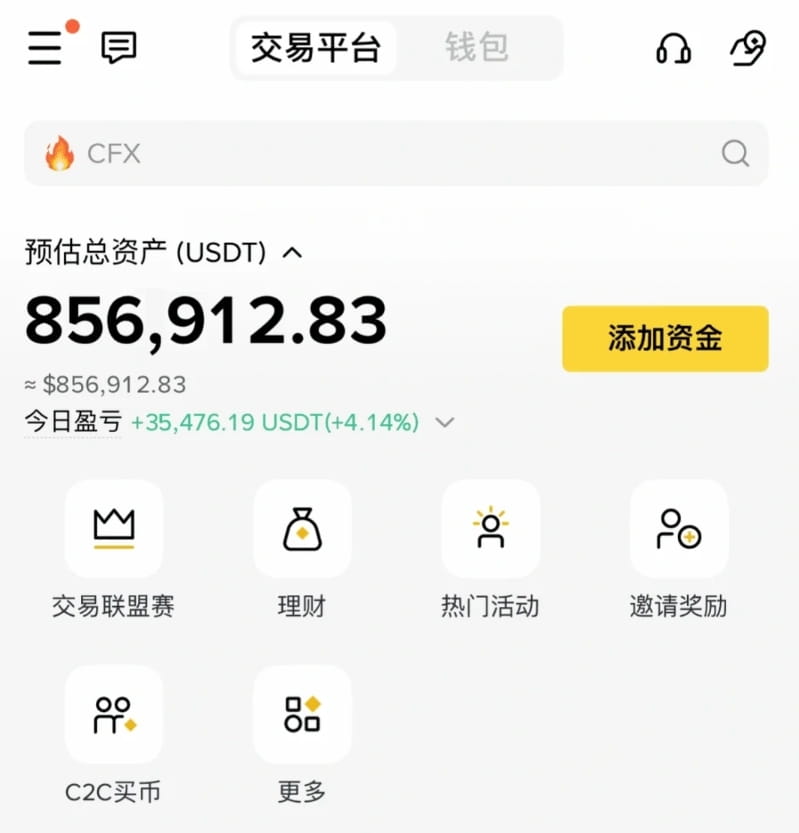I remember when I first entered the crypto world, I had 60,000 yuan in savings and was completely at a loss in front of the spot trading interface. The first time I bought BTC, I mistakenly took 'limit order' for 'market order' and placed a buy order far below the market price. I waited three days without a transaction, watching the coin price rise by 20%, and I was so anxious that I kept banging the table.

Later, I finally figured out how to operate, but then I fell into trouble with withdrawals—after working hard to earn some money, I wanted to withdraw it, but I couldn’t complete real-name authentication, and my funds were stuck for a week. During that time, I checked customer service messages every day and couldn’t eat.
After falling into so many pitfalls, I gradually organized a set of rules for spot trading. Today, I’ve written these experiences into an ultra-comprehensive guide. New friends can follow this to avoid many detours! ~✨
🌟 This ultra-detailed guide will help you quickly get started with spot trading and avoid common pitfalls! I recommend saving it to read slowly! ~📚
1️⃣ What is spot trading?
✅ When I first understood it, I remembered one sentence: directly buy digital assets with the money at hand (for example, using USDT to buy BTC). Once you buy it, it’s yours. You can hold it for as long as you want. Unlike contracts, there’s no leverage risk, and you can sleep soundly!
✅ I truly believe it’s suitable for beginners like us who pursue stability and want to hold for the long term. At least you don’t have to worry about liquidation, so the sense of security is maximized! 😊
2️⃣ Basic rules of spot trading
🔹 Trading pair: For example, BTC/USDT means using USDT to exchange for Bitcoin. I kept getting it mixed up at first, but later I remembered 'the left side is what you want to buy, and the right side is what you use to exchange,' and it became easier!
🔹 Types of orders:
Limit order: Set a psychological price and wait for the market to fluctuate to that price to execute the order. I usually use this when buying mainstream coins, as it allows me to get a better price!
Market order: Execute immediately at the current price, suitable for when you need to buy or sell urgently, but be aware it might not be cost-effective when fluctuations are large.
🔹 Transaction fees: Most platforms have fees around 0.1%. I specifically choose platforms with fee discounts, which can save quite a bit over the long term. Remember to check for promotional activities after registering!
3️⃣ Must-know guide for beginners to avoid pitfalls! 🚨
⚠️ Slippage risk: I once used a market order to buy ETH, calculating it would cost 10,000, but ended up spending over 300 more! Later I learned that market orders are prone to this during large fluctuations. Now I basically only use limit orders, which are much safer!
⚠️ Withdrawal rules: When I first tried to withdraw a large amount, the platform took 3 days to review. I was so anxious that I kept pestering customer service every day… I suggest everyone check the withdrawal time, fees, and review requirements in advance, so you don’t panic like I did!
⚠️ Minimum transaction amount: When I first started buying, I mistyped the number. I meant to buy 0.1 BTC but accidentally entered 1 BTC instead. I almost exceeded my budget! Always pay close attention when inputting, especially the decimal places!
4️⃣ Practical tips for spot trading 📝
📌 Dollar-cost averaging strategy: This is what I am currently using! Every month after getting paid, I set aside a portion of spare money to buy BTC, regardless of whether it goes up or down. This averages out the cost while also enforcing savings, suitable for friends who are bullish in the long term!
📌 Take profit and stop-loss: I set target prices in advance, for example, selling a portion when it rises by 20%, and decisively reducing my position when it drops by 10%, avoiding emotional trading while watching the K-line and being more rational!
📌 Pay attention to liquidity: Prioritize mainstream coins like BTC and ETH with high trading volumes. I’ve tried buying smaller coins, and when I wanted to sell, it took a long time to find a buyer, which was a lesson learned!
5️⃣ Safety first, protect your assets! 🔒
🔐 Diversify investments: I initially put all my money into one coin and lost sleep when it dropped… Now I’ve learned to diversify and buy 3-5 mainstream assets, which significantly reduces risk, and I only use spare money, so it doesn’t affect my life!
🔐 Cold wallet storage: I transfer large assets to a hardware wallet and keep only enough for daily transactions on exchanges. After all, no matter how safe a platform is, holding the private key yourself is the most reassuring (never take screenshots of your private key and store them on your phone!)
🔐 Protect your account: Always enable two-factor authentication (2FA). My password is a mix of letters + numbers + symbols, and I change it regularly. You can't slack off on security!
💡 Summary
Although spot trading is less risky than contracts, you must thoroughly understand the rules, techniques, and security details. Position control is critical! I hope my pitfalls can help everyone avoid detours and have smooth trading.#现货以太坊ETF获美SEC批准